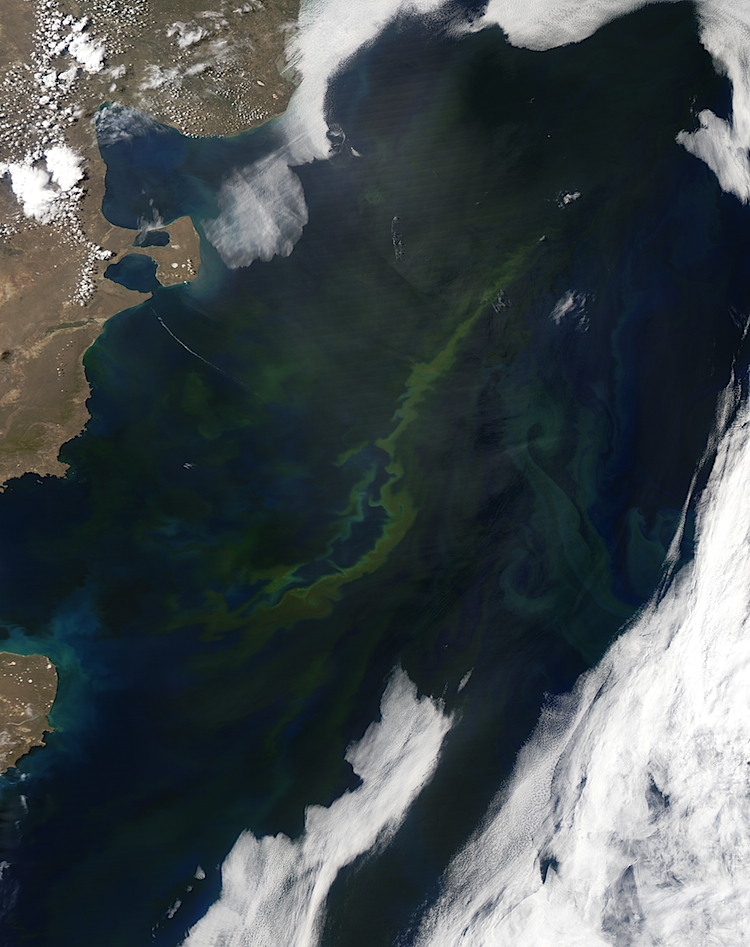Flowers are not the only things that color the spring scenery. This recent NASA satellite image shows a gorgeous bloom of phytoplankton decorating the coast of Argentina.
Phytoplankton are tiny, marine plants containing chlorophyll and other pigments that lend them their blue and green hues.
The pigments enable the microscopic organisms to photosynthesize, capturing sunlight to power the conversion of carbon dioxide and water into oxygen and sugars.
The phytoplankton in this image are probably coccolithophores, which are common in the area, and unique because of their ability to surround themselves with microscopic hubcap-shaped limestone scales.
From an aerial vantage point, the massive phytoplanktonic overgrowth appears as delicate swirls of blues and greens spanning hundreds of kilometers along the South American shore where the cool, fresh Malvinas Current from the south mixes with the warmer, salty Brazil Current from the north.
Nutrients for growth arrive from local river sediments containing nitrogen and iron, including the Rio de la Plata.
The image was captured by the Moderate Resolution Imaging Spectroradiometer (MODIS) on NASA’s Aqua satellite on Nov. 5.





